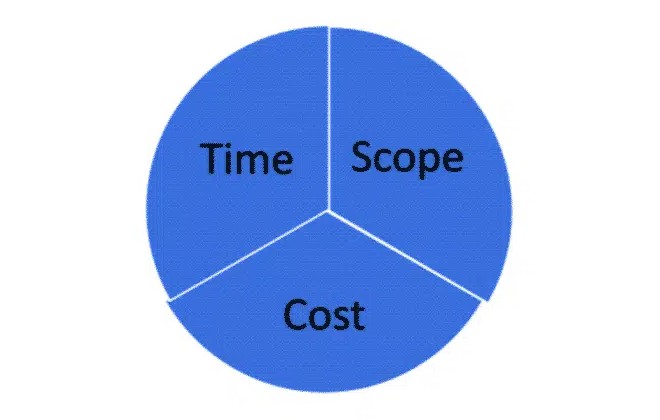Understanding Project Baseline in Project Management
Do you know what the first step of your project management should be? If you don’t, then let us decode this for you. Every journey begins with a single step. Similarly, the journey of project management, too. The first step you should take as the project manager is to establish a Project Baseline.
It is a fixed reference point that is your secret weapon to assess project performance over time. It’s like your project’s North Star, guiding you through the scope, cost, and schedule complexities. Think of it as your project’s DNA – unique, precise, and critical for success.
But a project baseline isn’t a set-it-and-forget-it tool. It demands precise monitoring, allowing you to adapt and test changes. It’s like a living, breathing entity that evolves with your project. So, are you ready to dive deeper into the world of project baselines?
What is a Project Baseline?

A project baseline is a predetermined set of aspects—precisely scope, cost, and schedule—that act as a reference model during a project’s lifecycle. The originality and precision of your project’s baseline define how effectively you can measure and judge your project’s execution and performance against the original plan.
A project baseline isn’t stagnant; it’s dynamic and needs to be adaptable. As the project progresses, inevitably, specific changes and adjustments are required. To dissect a project baseline further, it’s primarily divided into scope, cost, and schedule baselines. Each type carries its weight and is pivotal in shaping the project’s trajectory.
- Scope baseline: outlines the work that needs to be accomplished.
- Cost Baseline: outlines the budgetary requirements for the project.
- Schedule baseline: outlines the timeline for project completion.
Why are Project Baselines Important?
- Creating and monitoring a well-defined baseline precisely enhances the project’s performance, improves the reporting process, and strengthens stakeholder relationships.
- You must understand that not having a clear baseline can lead to problems down the line. It can result in miscommunication, overspending, and delays, so setting a clear, achievable baseline at the start of a project is vital.
- In the world of project management, a strong baseline is your project’s North Star. It guides you, helps keep track of project performance, and, most importantly, sets the trajectory for successful project completion.
- Clearly defined baselines can vastly improve your project’s performance as they pave the way for better communication and efficient resource allocation.
- Baseline monitoring is vital in the realm of baseline project management examples. Precise monitoring keeps you informed about current project standings and allows for adaptability. You can test changes and gauge impacts without derailing from the original project plan.
- Strong baseline project management can also help improve reporting and stakeholder relationships.
- By having a clear baseline project plan, you can better articulate project progress and expectations to stakeholders.
Types of Baseline in Project Management

When executing a project, you’ll consider different types of baselines. These are crucial for measuring project performance and ensuring that your project stays on track. Defining and using these baselines effectively will enable you to evaluate project success. Let’s delve into these baselines and how they contribute to successful project execution.
1. Scope Baseline
A scope baseline is a vital component of a project baseline, encompassing the goals, deliverables, and project requirements. It’s a document that details your project objectives and requirements. A well-defined scope baseline lays down what needs to be accomplished in your project, streamlining project execution and enhancing project performance.
You’ll need a project scope document and a work breakdown structure (WBS) to create a scope baseline. The project scope document outlines your project objectives and needs, serving as the stepping stone for your project. On the other hand, the WBS breaks down the project work into manageable tasks, detailing all work that needs to be completed to achieve your project goals.
2. Cost Baseline
For an accurate baseline project plan, you’ll need to consider your project’s cost – that’s where the cost baseline comes in. This baseline is essentially the approved budget for your project, entailing an estimation of costs associated with each project task. This can include labor costs, material costs, and other related expenses.
Accurate cost baseline monitoring allows you to identify discrepancies in your project budget and track its financial health. A cost breakdown structure is essential for establishing a solid cost baseline. It lists out the personnel, equipment, and materials required for each task, helping you estimate and monitor project costs effectively.
3. Schedule Baseline
Schedule optimization is key in baseline project management. The schedule baseline presents a timeline outlining when each task or work package should start and end. This baseline complements the scope and cost baselines, giving you a comprehensive picture of your project’s progress.
A project schedule is central to establishing a precise schedule baseline. It acts as a roadmap guiding you when each task should be initiated and wrapped up, supporting your efforts to finish the project within your set budget and deadline.
How To Create Project Baselines in 5 Steps?

Creating baseline project plans is a pivotal task for successful project management. Below, you’ll find a simple 5-step process that can guide you through setting up a solid project baseline.
Step 1. Determine Scope
Begin with determining your project’s scope. Think of your project as a journey – you must clearly lay out your destination before starting. To manage your project’s scope baseline, break the project activities into manageable steps. List all the required dependencies and also document these steps to ensure adequate maintenance. This process improves team performance and helps meet teams’ expectations, keeping them motivated along the way.
Step 2. Map Out Your Project Schedule
Imagine your project schedule as a roadmap to that destination. Create a work breakdown structure to organize your project’s deliverables and sub-deliverables visually. This tool breaks down the work into multiple levels, starting with your primary objective at the top and branching out into deliverables and sub-deliverables below. Once you’ve determined your project scope, map out your project schedule and create your schedule baseline. Make sure to clearly define due dates for each deliverable and clarify dependencies between tasks. For instance, finalize your guest speaker list for a recruiting event before you can send out reminder emails.
Step 3. Create a Project Budget Plan
Next, set your sights on your budget. As part of this baseline project management process, you have to accurately gauge project costs and budget estimates to keep ongoing tasks on track. Ensure you have the appropriate equipment, technical support, and essential materials to finish the tasks successfully and on time. This cost estimate is your cost baseline.
Step 4. Outline a Change Control Process
Change is inevitable in any project, so it’s essential to have a structured change control process in place. Your project baseline should be well-documented and controlled as the project progresses. If significant changes arise, the project baseline may need to be updated. However, retaining older versions of the project baseline is crucial for reference. Remember that altering a project baseline is a strategic move and should always strictly adhere to the established change control procedures.
Step 5. Incorporate Feedback from Project Stakeholders
Last but definitely not least, factor in feedback from your project stakeholders. Encouraging team participation in the baseline project planning can provide valuable insights. Stakeholder feedback can assist you in foreseeing potential roadblocks and course-correcting before issues escalate. Remember, every project is a team collaboration. Encouraging debates, suggestions, and constructive criticism from your project stakeholders will only lead to better project outcomes.
How To Use Project Baseline?

Once you’ve established a clear and defined project baseline, it’s vital to apply and use it effectively within your project management process to deliver successful outcomes.
Compare the Work Done by the Set Baseline
Your project baseline is crucial in analyzing and monitoring your project’s progress. It’s a yardstick, allowing you to measure the work that’s been done against what was initially planned. By aligning real-time data with your baseline project management plans, you can assess if scopes need adjustment, if schedules need to be recalibrated or if costs need to be trimmed.
Taking Measures to Stick to the Original Plan
Sticking to the baseline project plan is essential to ensuring project success. But challenges occur—changes in project scope add costs or lead to delays, while non-project-specific issues, like unanticipated labor problems, affect all projects. These instances can lead to cost overruns and unexpected cost increases that can significantly impact the project cost baseline, the organization’s cash flow, and, eventually, profitability.
Analyzing the Achievements
Finally, your project baseline serves as a powerful tool for future planning. By studying how a project has performed against the set baseline, you can gain insights that can help improve the planning and execution of future projects.
Take a practical example of “Renovation of XYZ Building.” A detailed cost baseline was created with tasks broken down into demolition, structural, electrical, and finishing. By tracing the budget against progress, project performance can be monitored effectively.
When & Why Should Update a Project Baseline?
A well-established project baseline is your guiding star in managing a project. Despite best-laid plans, unexpected changes may require updating the baseline. Now, you might wonder, should the project baseline—that critical tool in maintaining clarity and direction—be adjusted according to the ongoing circumstances?
Well, updating a baseline in project management is not something done lightly. It demands serious thought and should be followed by rigorous change control procedures. Significant alterations might occur as your project progresses, impacting your baseline project management strategies.
Enter real-time execution: variances occur, challenges rise, and suddenly, sticking to the original baseline seems less than ideal. It’s at these critical junctures that updating the project baseline may become necessary. Yet, all changes must be communicated to the team promptly to maintain synchronization.
What Are The Problems Caused By Not Having a Project Baseline?
As you explore project management more deeply, you’ll realize the pivotal role of a project baseline. Can you imagine leading an expedition without a map or compass? Similarly, lacking a baseline in project management can lead to a bewildering journey full of uncertainties and pitfalls.
- You lack a structured roadmap outlining the essential key performance indicators (KPIs), such as cost, schedule, and scope.
- Without a baseline, gauging the project’s health becomes a formidable task.
- You can’t identify deviations, and tracking performance resembles groping in the dark.
- Overruns spiral out of control, as noted in the cases of numerous megaprojects.
- Could lead to disastrous outcomes.
Conclusion
A project baseline is no less essential than a map for a traveler. Without it, gauging project health or identifying deviations becomes a guessing game. Remember Baseline Road’s issues? That’s precisely what happens when you underestimate the power of a project baseline. With a solid baseline, you’re equipped to handle real-time challenges, especially in IT scenarios. It’s like having a steering wheel that guides your project effectively.
Frequently Asked Questions
Q1. What is the critical role of a project baseline in project management?
A project baseline is a crucial tool used in project management. It serves as a “map” to guide the project, helping to gauge the project’s health, identify deviations, and track performance effectively.
Q2. What are some challenges faced without a baseline?
Without a baseline, a project might face hurdles such as the inability to gauge progress, identify deviations, and track performance effectively. This could potentially lead to uncontrollable overruns.
Q3. Can you provide an example of issues due to lacking baseline plans?
An example could be the challenges encountered in Baseline Road. A lack of baseline plans led to persistent inconsistency and deviations, complicating project management.
Q4. How does a baseline offer foresight in IT scenarios?
A baseline is fundamental in IT scenarios because it helps predict potential challenges and enables timely course correction. This not only keeps the project on track but also alerts managers to real-time changes that might affect outcomes.
Q5. Why should baseline project management not be underestimated?
Underestimating baseline project management is akin to assembling a car without a steering wheel. It provides guidance and direction to a project, ensuring it achieves its desired outcome within the stipulated time and budget.

Leave a Reply